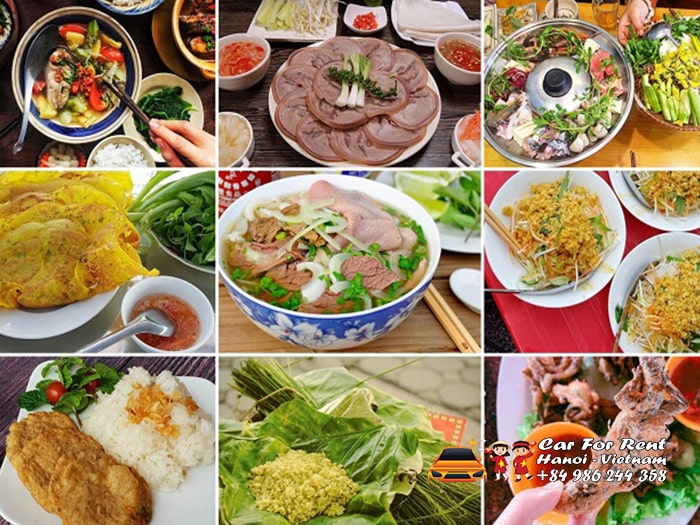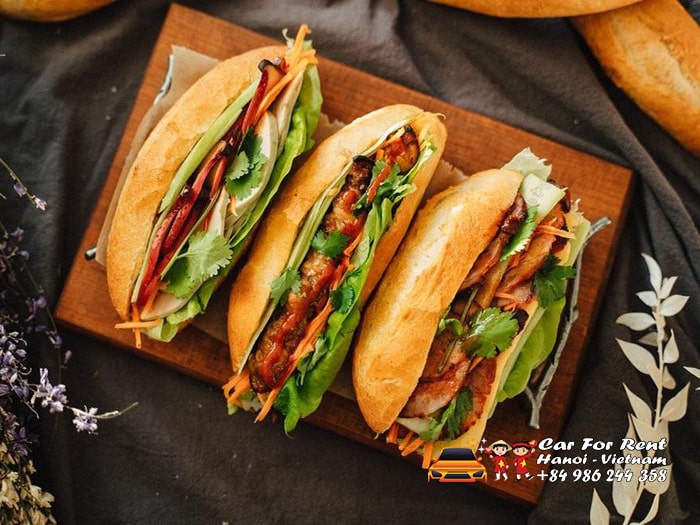hanoi vietnam travel Hanoi is the capital and the second-largest city of Vietnam, with a population of over 8 million people. It is also one of the oldest cities in Southeast Asia, with a history dating back to over 1000 years. Hanoi is a city of contrasts, where the ancient and the modern, the traditional and the trendy, the chaotic and the serene coexist in harmony. Hanoi is a city that offers something for everyone, whether you are interested in culture, history, cuisine, nightlife, or nature. In this blog post, we will guide you through some of the best things to do and see in Hanoi Vietnam travel.
How to get to Hanoi
Hanoi is well-connected by air, land, and rail to other parts of Vietnam and the world. The main airport is Noi Bai International Airport (HAN), which is located about 30 km north of the city center. You can take a taxi, a bus, or a shuttle to get to your hotel from the airport. The taxi fare is around 300,000 VND ($13 USD), while the bus fare is 40,000 VND ($1.7 USD). The shuttle service is operated by some hotels and costs around 100,000 VND ($4.3 USD) per person. hanoi vietnam travel

If you are traveling from other cities in Vietnam, you can take a train or a bus to Hanoi. The main train station is Hanoi Railway Station (Ga Hà Nội), which is located in the heart of the city. You can book your train tickets online or at the station. The train journey from Ho Chi Minh City to Hanoi takes about 35 hours and costs around 1.5 million VND ($65 USD) for a soft sleeper berth. The main bus station is Giap Bat Bus Station (Bến xe Giáp Bát), which is located about 10 km south of the city center. You can take a taxi or a bus to get to your hotel from the bus station. The bus fare is around 10,000 VND ($0.4 USD).
How to get around Hanoi
Hanoi is a large and busy city, but it is also very walkable and bikeable. You can explore the Old Quarter, the French Quarter, and the Hoan Kiem Lake area on foot or by bicycle. You can rent a bicycle from some hotels or shops for around 50,000 VND ($2.2 USD) per day. hanoi vietnam travel
If you want to go further or faster, you can take a taxi, a motorbike taxi (xe om), a cyclo (xích lô), or a bus. Taxis are plentiful and cheap in Hanoi, but make sure to use a reputable company such as Mai Linh or Taxi Group and ask for the meter to be turned on. The average taxi fare is around 15,000 VND ($0.6 USD) per km. Motorbike taxis are also widely available and convenient, but you should negotiate the price before you hop on. The average motorbike taxi fare is around 10,000 VND ($0.4 USD) per km. Cyclos are three-wheeled pedicabs that offer a leisurely and scenic ride around the city. You can find them near tourist attractions or hotels and negotiate the price before you get in. The average cyclo fare is around 100,000 VND ($4.3 USD) per hour. hanoi vietnam travel

Buses are another option to get around Hanoi, especially if you want to go to places that are not within walking distance. Hanoi has an extensive and modern bus network that covers most of the city and its suburbs. You can buy a bus ticket from the conductor on board for around 7,000 VND ($0.3 USD) per ride.
What to see in Hanoi
Hanoi has many attractions that showcase its rich culture and history. Here are some of the must-see places in Hanoi Vietnam travel:
Hoan Kiem Lake
Hoan Kiem Lake (Hồ Hoàn Kiếm) is the heart and soul of Hanoi. It is a beautiful lake surrounded by trees, gardens, temples, and bridges. It is also a popular spot for locals and tourists alike to relax, exercise, socialize, or enjoy the views.
The most iconic feature of Hoan Kiem Lake is the Turtle Tower (Tháp Rùa), a small pagoda that stands on an islet in the middle of the lake. According to legend, the lake was the home of a golden turtle god that helped the Vietnamese king Le Loi defeat the Chinese invaders in the 15th century. The turtle god gave the king a magical sword and later reclaimed it by emerging from the lake and taking it back. The lake was then named Hoan Kiem, which means “Lake of the Returned Sword”. hanoi vietnam travel
Another attraction of Hoan Kiem Lake is the Ngoc Son Temple (Đền Ngọc Sơn), a temple dedicated to the Taoist god of literature and the national hero Tran Hung Dao. The temple is located on a small island connected by the red Huc Bridge (Cầu Thê Húc), which means “Bridge of the Rising Sun”. The temple is a serene and elegant place to admire the architecture, art, and history of Hanoi. hanoi vietnam travel

Old Quarter
The Old Quarter (Phố Cổ) is the oldest and most vibrant part of Hanoi. It is a maze of narrow streets, alleys, shops, cafes, restaurants, bars, and hotels. It is also a living museum of Hanoi’s culture and history, as each street is named after a specific trade or craft that was practiced there in the past.
The Old Quarter is a great place to explore on foot or by bicycle, as you can discover many hidden gems and local delights along the way. You can also join a walking tour or a food tour to learn more about the history and cuisine of the area. Some of the highlights of the Old Quarter include:
- Dong Xuan Market (Chợ Đồng Xuân), the largest and oldest market in Hanoi, where you can find everything from clothes, electronics, souvenirs, to fresh produce, seafood, and street food.
- Bach Ma Temple (Đền Bạch Mã), the oldest temple in Hanoi, dating back to the 11th century. It is dedicated to a white horse that helped the king locate the site for building the city walls.
- Ta Hien Street (Phố Tạ Hiện), also known as “Beer Street”, where you can enjoy a cold beer and some snacks while watching the lively street scene.
- O Quan Chuong Gate (Cổng Ô Quan Chưởng), the only remaining gate of the old city wall, built in 1749. It is a symbol of Hanoi’s resilience and pride.

Ho Chi Minh Mausoleum Complex
The Ho Chi Minh Mausoleum Complex (Khu Lăng Chủ Tịch Hồ Chí Minh) is a tribute to the founder and leader of modern Vietnam, Ho Chi Minh. It is located in Ba Dinh Square (Quảng Trường Ba Đình), where he declared Vietnam’s independence from France in 1945. hanoi vietnam travel
The complex consists of several buildings and monuments, such as:
- Ho Chi Minh Mausoleum (Lăng Chủ Tịch Hồ Chí Minh), where you can see the embalmed body of Ho Chi Minh in a glass coffin. The mausoleum is open from 8 am to 11 am every day except Monday and Friday. You need to dress modestly and follow strict rules of conduct when visiting.
- Ho Chi Minh Museum (Bảo Tàng Hồ Chí Minh), where you can learn more about his life and achievements through exhibits, photos, and artifacts.
- Ho Chi Minh Stilt House (Nhà Sàn Bác Hồ), where he lived and worked from 1958 to 1969. It is a simple wooden house on stilts that reflects his humble and simple lifestyle.
- One Pillar Pagoda (Chùa Một Cột), a unique Buddhist temple that resembles a lotus flower rising from a pond. It was built in 1049 by Emperor Ly Thai Tong to express his gratitude for having a son.
Temple of Literature
The Temple of Literature (Văn Miếu) is one of the most important cultural and historical sites in Hanoi. It was founded in 1070 by Emperor Ly Thanh Tong as Vietnam’s first university and a place to honor Confucius and other scholars. hanoi vietnam travel
The temple consists of five courtyards, each with its own gate, pavilion, garden, and pond. The most notable features of the temple include:
- The Great Gate (Đại Trung Môn), which marks the entrance to the temple. It has four pillars with inscriptions that praise the virtues of education and learning.
- The Well of Heavenly Clarity (Thiên Quang Tỉnh), which is a large pond in the second courtyard. It symbolizes purity and wisdom.
- The Constellation of Literature Pavilion (Khuê Văn Các), which is a two-story pavilion in the third courtyard. It is considered the symbol of Hanoi and Vietnamese culture.

- The House of Ceremonies (Đại Thành Điện), which is a large hall in the fourth courtyard. It contains statues of Confucius and his four main disciples, as well as altars for other sages and scholars.
- The Stelae of Doctors (Biên Đình), which are 82 stone tablets mounted on turtle-shaped pedestals in the fifth courtyard. They record the names and achievements of the graduates of the royal examinations from 1442 to 1779. They are considered valuable historical documents and examples of fine calligraphy.
The Temple of Literature is a peaceful and elegant place to admire the architecture, art, and history of Hanoi. It is also a popular spot for students and visitors to take photos and wish for academic success. hanoi vietnam travel
Imperial Citadel of Thang Long
The Imperial Citadel of Thang Long (Hoàng Thành Thăng Long) is a UNESCO World Heritage Site that represents the political and cultural center of Vietnam for over 13 centuries. It was built in 1010 by Emperor Ly Thai To as the capital of Dai Viet (the former name of Vietnam). It was later expanded and modified by subsequent dynasties until 1810, when the capital was moved to Hue. hanoi vietnam travel
The citadel covers an area of 18 hectares and consists of several buildings and structures, such as:
- The Flag Tower (Cột Cờ), which is a 33-meter-high tower that serves as the symbol of Hanoi. It was built in 1812 and has three tiers with eight windows each.
- The Doan Mon Gate (Cổng Đoan Môn), which is the main gate to the citadel. It has five arches and dates back to the 15th century.
- The Kinh Thien Palace (Điện Kính Thiên), which is the main building of the citadel. It was used for royal ceremonies and meetings. It was destroyed by the French in 1886 and only the foundation remains today.

- The Hau Lau (Hậu Lâu), which is a pavilion that served as the residence of the royal concubines. It was built in 1821 and has a yellow roof and red walls.
- The D67 House (Nhà D67), which is a bunker that served as the headquarters of the Vietnamese military during the Vietnam War. It was built in 1967 and has a secret tunnel that connects to other parts of the citadel.
The Imperial Citadel of Thang Long is a fascinating place to explore the history and culture of Vietnam. You can also visit the onsite museum that displays artifacts, models, and photos related to the citadel. hanoi vietnam travel
What to do in Hanoi
Hanoi is not only a city of sights, but also a city of activities. Here are some of the fun and exciting things to do in Hanoi Vietnam travel:
Watch a water puppet show
Water puppetry (Múa rối nước) is a traditional art form that originated in northern Vietnam over 1000 years ago. It involves wooden puppets that are controlled by hidden puppeteers in a pool of water. The puppets perform stories and scenes from Vietnamese folklore, history, and daily life, accompanied by live music and singing. hanoi vietnam travel
One of the best places to watch a water puppet show in Hanoi is the Thang Long Water Puppet Theatre (Nhà hát Múa rối nước Thăng Long), which is located near Hoan Kiem Lake. The theatre offers several shows per day, each lasting about an hour. You can buy tickets online or at the box office for around 100,000 VND ($4.3 USD) per person. hanoi vietnam travel
Enjoy a coffee with egg
Coffee with egg (Cà phê trứng) is a specialty drink that originated in Hanoi in the 1940s. It is made by whisking egg yolks with condensed milk and sugar until fluffy, then pouring it over hot coffee. The result is a creamy, sweet, and rich beverage that tastes like a dessert. hanoi vietnam travel
One of the best places to try coffee with egg in Hanoi is Giang Cafe (Cà phê Giảng), which claims to be the inventor of the drink. The cafe is located in a small alley off Nguyen Huu Huan Street in the Old Quarter. You can order a cup of coffee with egg for around 20,000 VND ($0.9 USD) and enjoy it in a cozy and nostalgic atmosphere. hanoi vietnam travel
Take a cooking class
Vietnamese cuisine is one of the most diverse and delicious in the world, with influences from China, France, India, and other countries. Hanoi is a great place to learn how to cook some of the most popular dishes, such as pho (noodle soup), bun cha (grilled pork with rice noodles), nem (spring rolls), and banh xeo (crispy pancakes). hanoi vietnam travel

There are many cooking classes available in Hanoi, ranging from half-day to full-day courses. You can choose from different menus, styles, and locations, depending on your preference and budget. Some of the best cooking classes in Hanoi include:
- Hanoi Cooking Centre (Trung tâm nấu ăn Hà Nội), which offers a variety of classes that cover different regions, themes, and levels of difficulty. You can also join a market tour, a street food tour, or a wine tasting session. The price is around 1.1 million VND ($47 USD) per person for a half-day class. hanoi vietnam travel
- Apron Up Cooking Class (Lớp nấu ăn Apron Up), which offers a hands-on and fun experience that teaches you how to make four dishes from scratch. You can also visit a local market and learn about the ingredients and spices. The price is around 600,000 VND ($26 USD) per person for a half-day class. hanoi vietnam travel
- Highway4 Cooking Class (Lớp nấu ăn Highway4), which offers a unique and adventurous experience that introduces you to some of the exotic and unusual dishes of Vietnam, such as frog, snake, insect, and rat. You can also enjoy a complimentary cocktail and a certificate of completion. The price is around 800,000 VND ($34 USD) per person for a half-day class. hanoi vietnam travel
Shop at the night market
Hanoi’s night market (Chợ đêm Hà Nội) is a lively and colorful event that takes place every weekend from Friday to Sunday, from 6 pm to 11 pm. It stretches for about 3 km along Hang Dao Street, Hang Ngang Street, and Hang Duong Street in the Old Quarter. hanoi vietnam travel
The night market is a great place to shop for souvenirs, clothes, accessories, handicrafts, and other items at bargain prices. You can also find many street food stalls that sell snacks, drinks, and desserts. The night market is also a place to enjoy the culture and entertainment of Hanoi, as you can watch street performances, live music, and games. hanoi vietnam travel
Visit the Ethnology Museum
The Ethnology Museum (Bảo tàng Dân tộc học) is one of the most interesting and informative museums in Hanoi. It showcases the diversity and richness of Vietnam’s 54 ethnic groups through exhibits, artifacts, photos, videos, and models. hanoi vietnam travel
The museum has two main sections: the indoor exhibition hall and the outdoor exhibition area. The indoor exhibition hall displays the costumes, tools, instruments, weapons, jewelry, and household items of each ethnic group. The outdoor exhibition area displays the traditional houses, architecture, and lifestyles of each ethnic group. hanoi vietnam travel
The Ethnology Museum is open from Tuesday to Sunday, from 8:30 am to 5:30 pm. The entrance fee is 40,000 VND ($1.7 USD) per person.
Contact us:
Car For Rent Hanoi VietNam
https://zalo.me/0986244358
Conclusion
Hanoi is a city that will captivate you with its charm, culture, and history. It is a city that will surprise you with its diversity, dynamism, and creativity. It is a city that will delight you with its cuisine, nightlife, and activities. Hanoi is a city that you will fall in love with and want to return to again and again. hanoi vietnam travel
We hope this blog post has given you some ideas and inspiration for your Hanoi Vietnam travel. If you have any questions or comments, please feel free to leave them below. Thank you for reading and happy travels!












